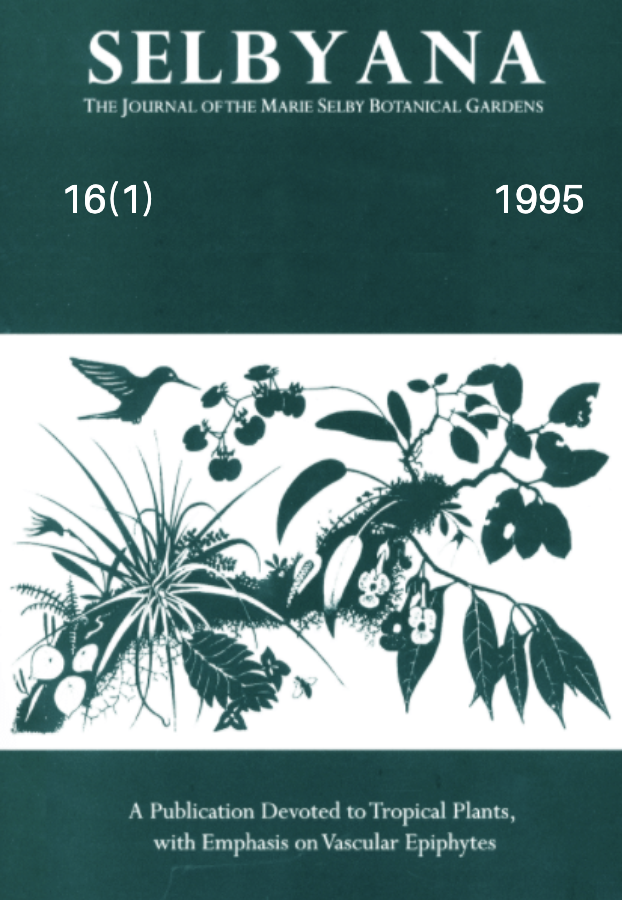Abstract
The epiphytic flora of Brazilian tropical rainforest is poorly known. The aims of this study are to list the bromeliad genera that occur in high altitude rainforest in the Macaé de Cima region and to study their distribution on phorophytes. The frequency of bromeliads on phorophytes within 20 sample plots was determined using the observation from distance method recording: 1) clumps, 2) height above ground, and 3) location. Bromeliad genera height, percent of epiphytism/diameter at breast height (DBH), size, class and percent of epiphytism of all individuals were determined. Univariate and multivariate analyses were used to determine significance, correlations and epiphytic-vegetational gradient on host trees. A total of 122 phorophytes representing 20 families and 46 species supported epiphytes. Five genera of Bromeliaceae were found: Vriesea, Nidularium, Billbergia, Tillandsia and Quesnelia. Concerning vertical distribution, two levels were found. The establishment of bromeliads apparently depended on phorophyte species. DBH was not correlated with bromeliad frequency, and multivariate analysis showed three-way attachment of bromeliads on the phorophytes. The genera could be classified as selective, preferential, indifferent and accidental.
Open Access and Copyright Notice
Selbyana is committed to real and immediate open access for academic work. All of Selbyana's articles and reviews are free to access immediately upon publication. There are no author charges (APCs) prior to publication, and no charges for readers to download articles and reviews for their own scholarly use. To facilitate this, Selbyana depends on the financial backing of the Marie Selby Botanical Gardens, the hard work and dedication of its editorial team and advisory board, and the continuing support of its network of peer reviewers and partner institutions.
Authors are free to choose which open license they would like to use for their work. Our default license is the Creative Commons Attribution-NonCommercial 4.0 (CC BY-NC 4.0). While Selbyana’s articles can be copied by anyone for noncommercial purposes if proper credit is given, all materials are published under an open-access license with authors retaining full and permanent ownership of their work. The author grants Selbyana a perpetual, non-exclusive right to publish the work and to include it in other aggregations and indexes to achieve broader impact and visibility.
Authors are responsible for and required to ascertain that they are in possession of image rights for any and all photographs, illustrations, and figures included in their work or to obtain publication or reproduction rights from the rights holders. Contents of the journal will be registered with the Directory of Open Access Journals and similar repositories. Authors are encouraged to store their work elsewhere, for instance in institutional repositories or personal websites, including commercial sites such as academia.edu, to increase circulation (see The Effects of Open Access).
